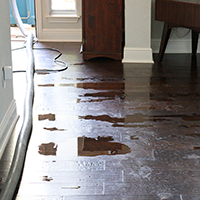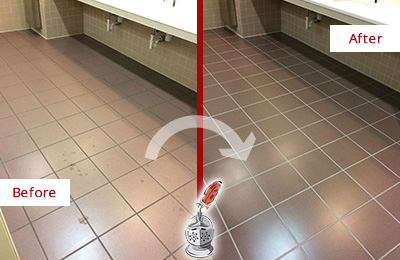Just How to Avoid Bathroom Water Damage
Just How to Avoid Bathroom Water Damage
Blog Article
Just about everyone has got their own perception involving Common Causes of Water Damage in a Bathroom.

The restroom is extremely at risk for damp accumulation and also prospective water damage as a result of the frequent use water in it. This short article supplies simple assessment methods to aid finding water damage dangers.
The frequent use water in the restroom makes it extremely prone for moist buildup and possible water damage. By evaluating it frequently, you can reduce water associated damages.
The complying with set of assessments is easy to carry out and also ought to be done as soon as in every three months in order to maintain your bathroom in good shape and also to avoid possible water damages triggered by the bathtub, the shower, pipe joints and also plumbing, sinks, cabinets, as well as the toilet
Do not disregard executing these evaluations and also be comprehensive while doing them. Keep in mind that these easy examinations can save you a lot of money by supplying early indicators for water damages
Tub and also Shower
The shower and tub require special focus and upkeep. Check the ceramic tiles and also replace if split. Make sure that there is no missing cement between the ceramic tiles. Evaluate and change fractured caulking at joints where the walls satisfy the flooring or the bathtub. Blocked drains pipes and pipelines troubles will avoid the bath tub from drying as well as might show major issues under the bathtub. Speak with a specialist immediately to avoid architectural damages. Pay attention to discolorations or soft locations around the bath tub walls as they may suggest an interior leakage.
Plumbing
Signs for water damages are tough to identify since most pipes are installed inside the walls.
Pay special interest to flooring as well as walls wetness and stains as they may indicate an invisible plumbing problem. Check moisture degrees in adjacent areas too.
Sinks and also Cabinets
Sinks and also closets are revealed to dampness as well as moisture everyday as well as are typically ignored. Examine frequently under the sink and on the countertop above it. Fix any kind of drip in the catch as it may suggest drainpipe troubles. Check out the sink, slow-moving draining pipelines may indicate a blocked drain. Change sink seals if they are split or loosened.
The Bathroom
The bathroom is a prone water junction. Check the water lines and look for leakages around the bathroom seat, in the hose pipe, and under the water tank. If you identify any kind of indications of moisture on the floor around the commode, check for leakages in the toilet edge as well as tank seals.
Realize that hanging commode bowl deodorants raises the opportunities for blockages.
Water Damage Signs In The Bathroom To Avoid Cleanup
Musty smell
This is one of the easiest signs to catch because musty smells are so odorous. The damp, earthy, moldy smell should be a big red flag. The smell will develop when moisture gets trapped in surfaces, and begins to facilitate mold growth. Leaking pipes under cabinets, inside walls, and behind shower fixtures will cause moisture to stay trapped and not dry, which will lead to mold growth and spread. As soon as you notice any musty smells in your bathroom, have it checked for hidden water damage and cleanup signs.
Visible mold
If the smell isn’t there to give it away, sometimes you will actually see mold growth. Finding mold in your bathroom is a serious problem, because mold is very harmful to your health. By the time mold growth is visible, it also means that water damage has already occurred and been present for some time. The only way the mold problem can be resolved is to find the source of the moisture and get it stopped. To safely and adequately remove mold, you need to have professionals handle the remediation. Do not waste any time in getting mold problems addressed, fixed, and sanitized so that you can protect you and your family from the many respiratory symptoms caused by mold exposure.
Damaged floors
Bathroom floors should be able to withstand some exposure to water while still remaining in good condition. However, when excess exposure or water leaks occur, they will begin to damage even the most water-resistant flooring. If you notice any cracking, bubbling, staining, or warping on your bathroom floors, there is probably a water leak somewhere causing the distortion. If you notice areas of the floor have become softer, or even have a spongy feeling, there is probably damage to the subfloor. Subflooring is typically made up of plywood. When plywood is exposed to water or moisture, it will absorb it. Once it has become saturated, the weight of the excess water will cause the wood to swell and soften. Check the floors in your bathroom frequently to catch any of these sings before they lead to damaged subflooring.
Changes on walls
When water leaks behind walls, it will cause changes in the drywall. Peeling plaster, blistering paint, and soggy wallpaper are all good indicators that excess water is building up behind the wall. Water leaking behind drywall will cause it to swell and be soft to the tough. If you start to notice gaps along the trim of your walls, or where tile meets the wall, it could also be a strong indicator that there is a leak behind the wall. Any changes, distortion, or damage on the walls should be evaluated as soon as you notice it to prevent further water damage and cleanup.

Do you appreciate reading about How to Fix a Water Damage Bathroom? Write feedback down the page. We will be glad to see your feelings about this post. We hope that you visit us again soon. Are you aware of somebody who is serious about Common Causes of Water Damage in a Bathroom? Do not hesitate to promote it. Thank you for your time. Kindly check our blog back soon.
Find Out More Report this page